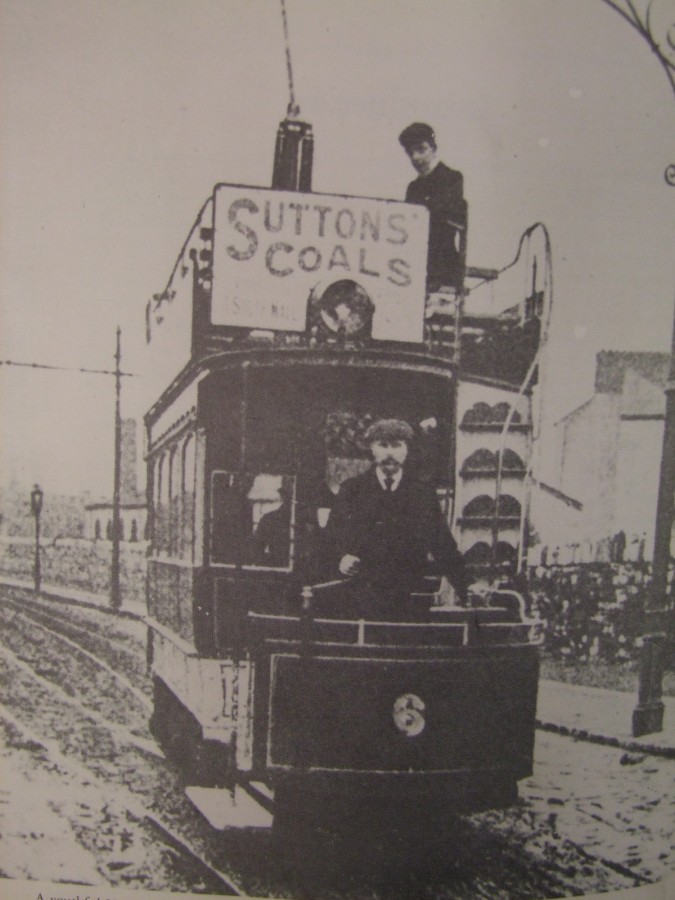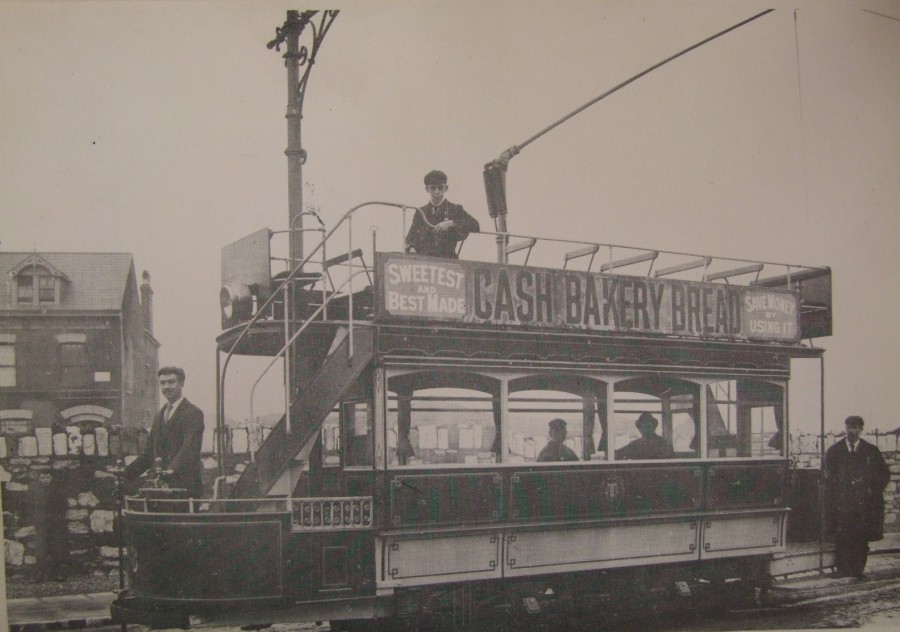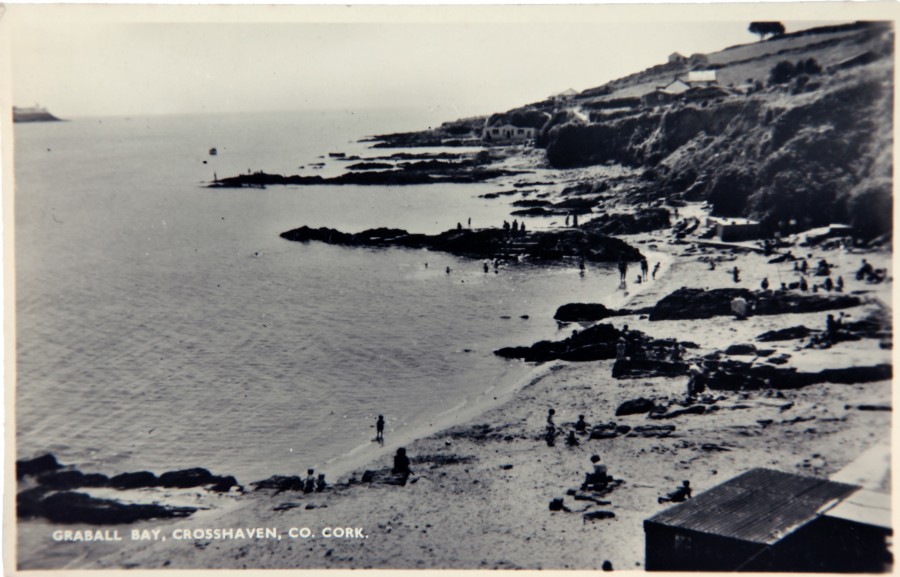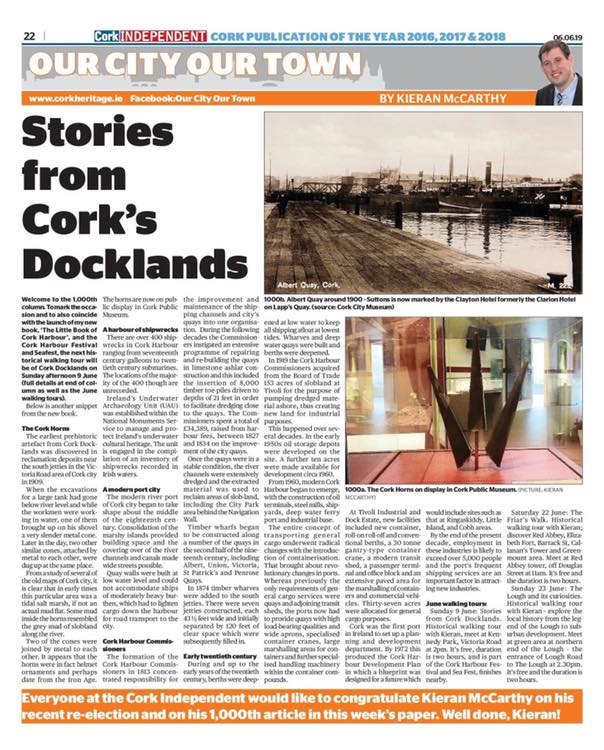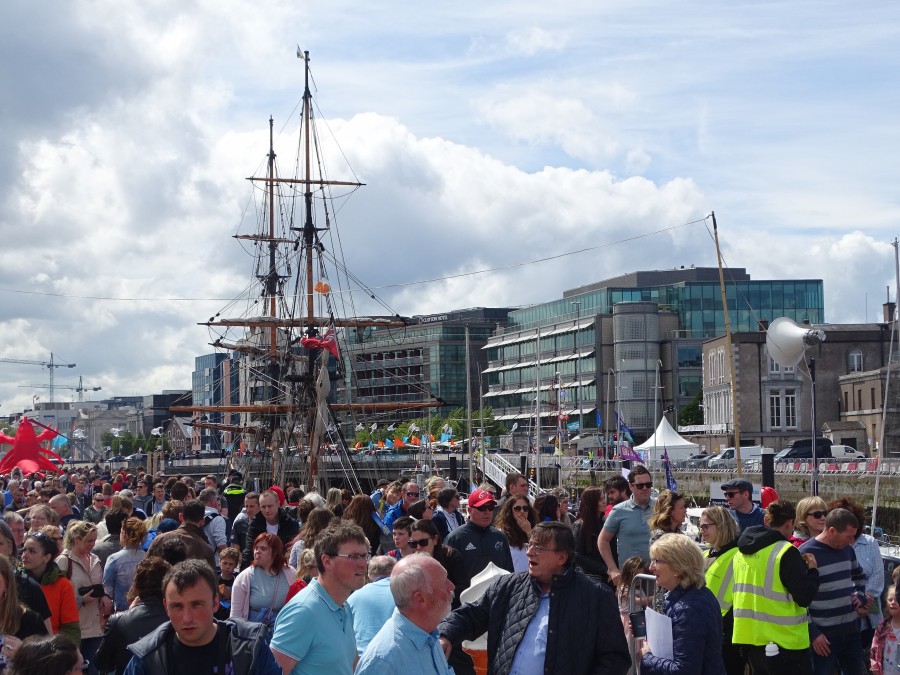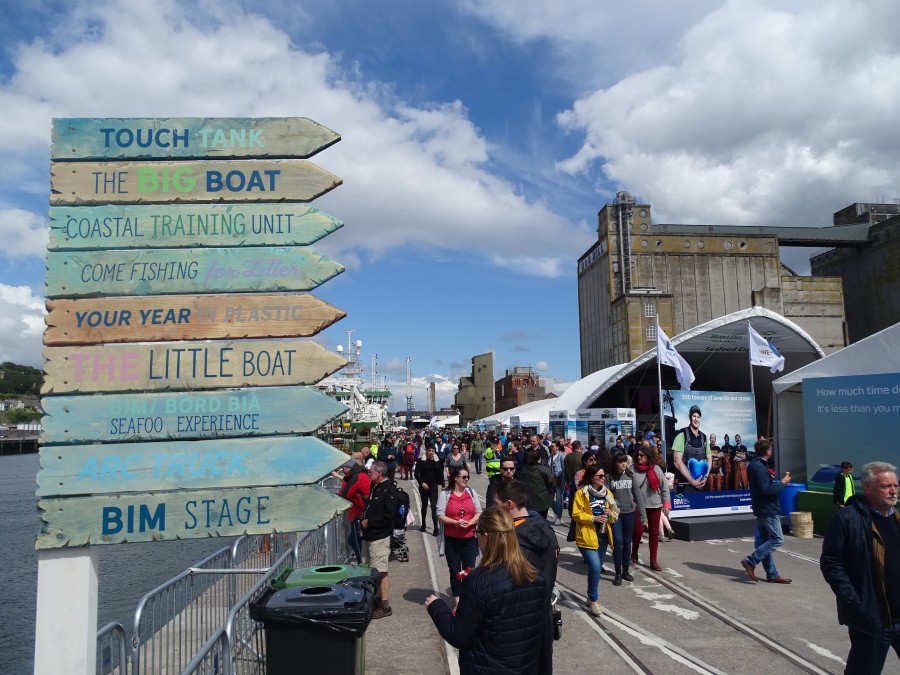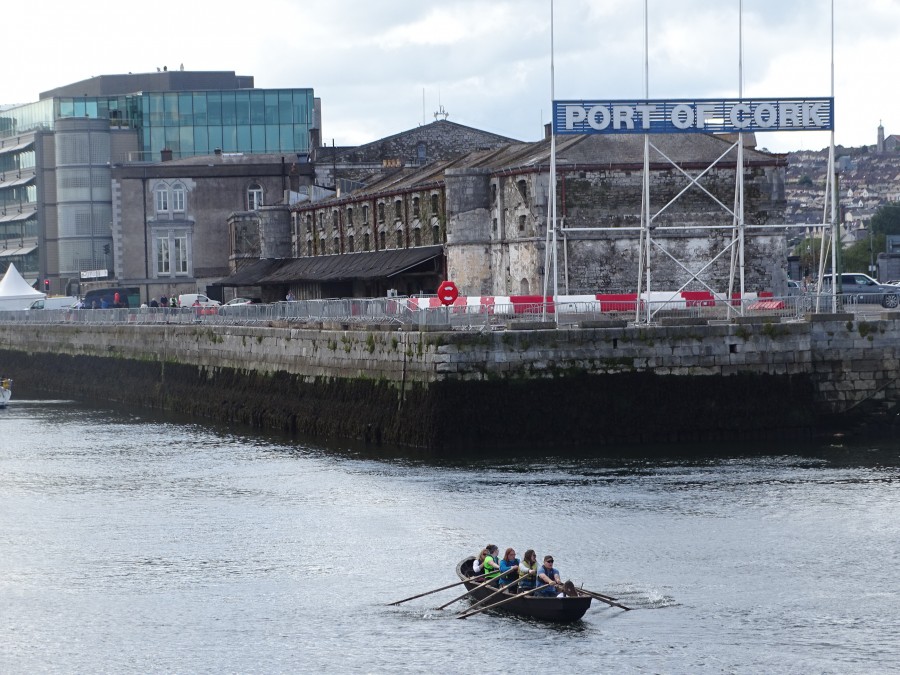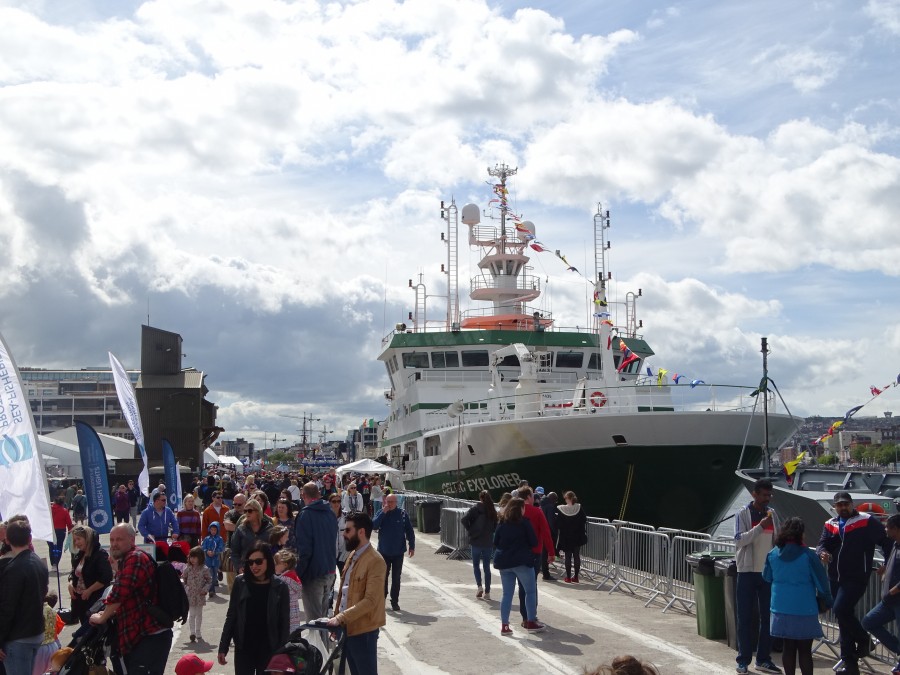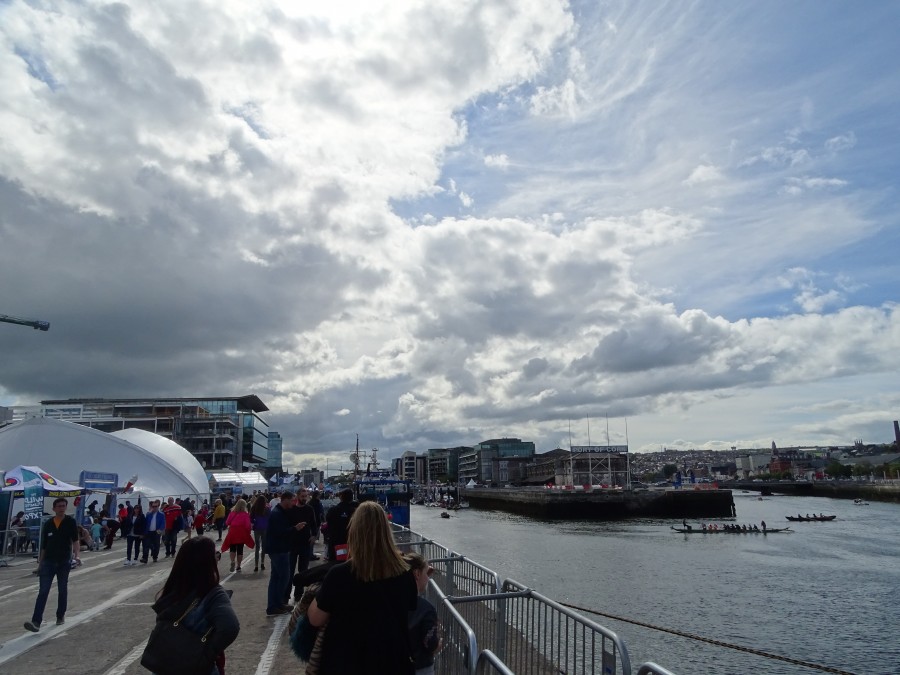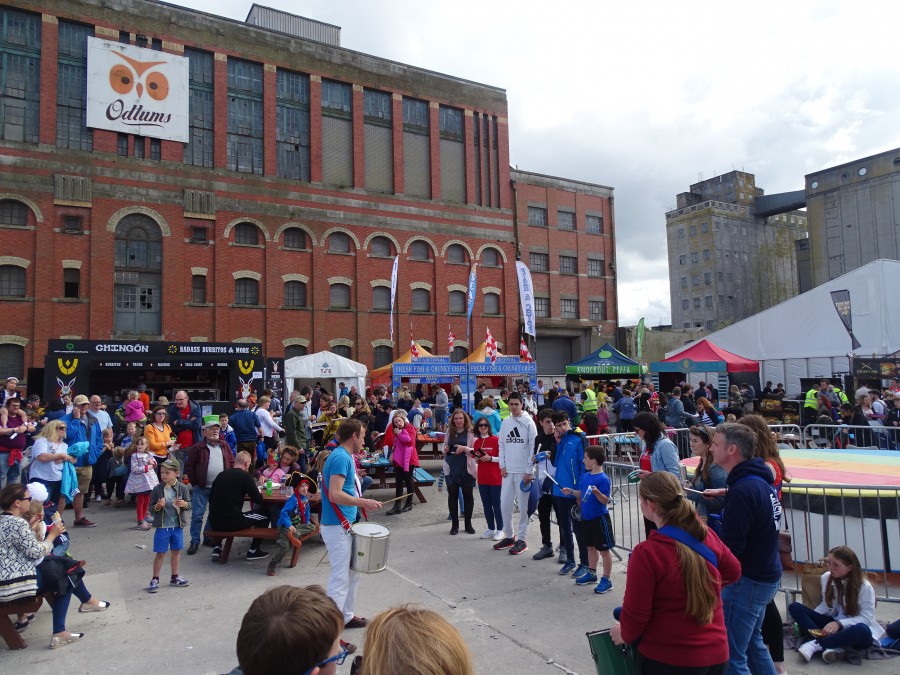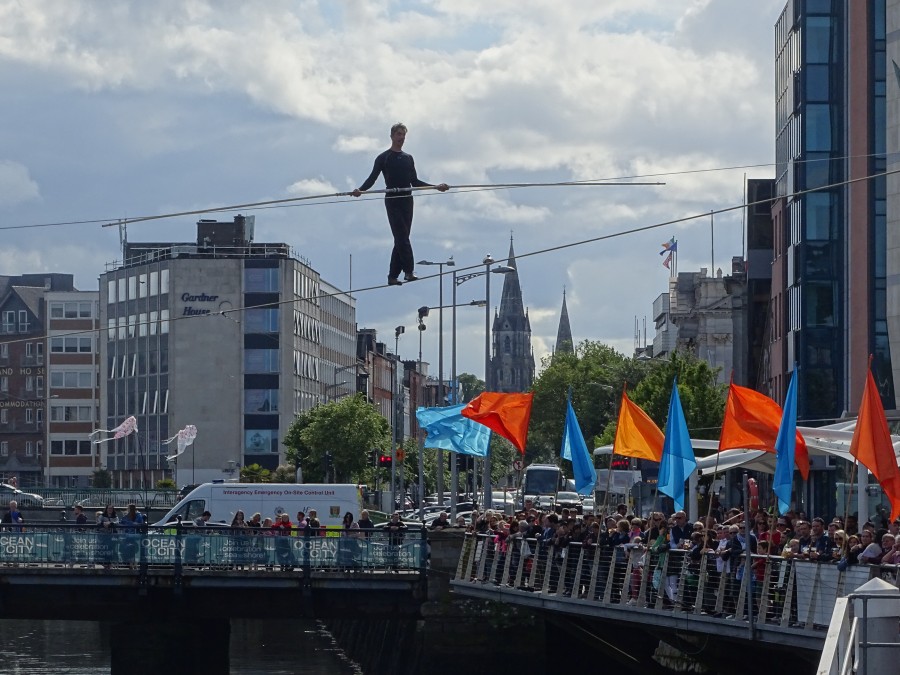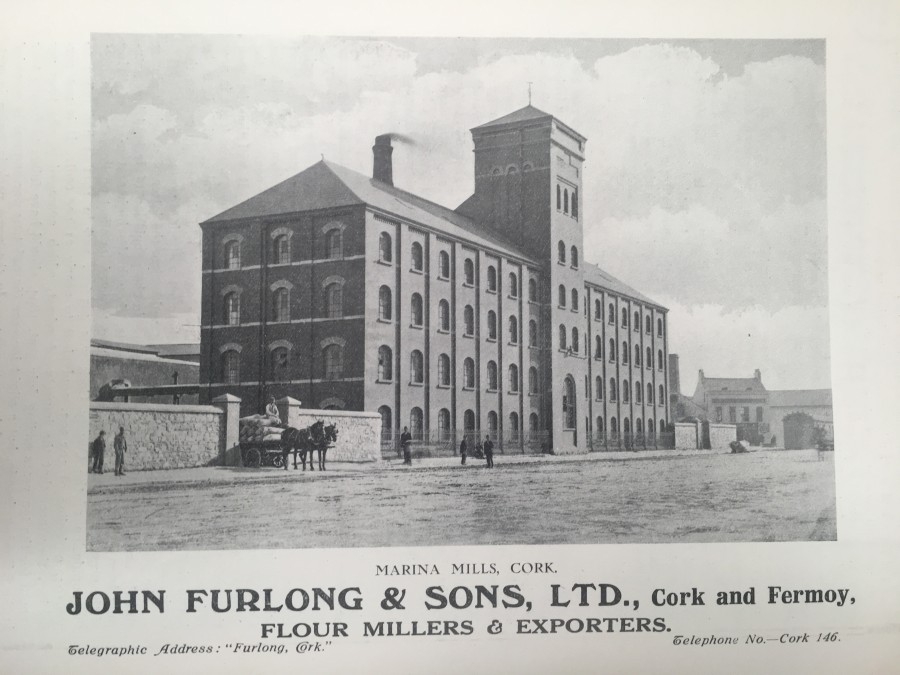Category Archives: Cork History
Kieran’s Our City, Our Town, 20 June 2019
Kieran’s Our City, Our Town Article,
Cork Independent, 20 June 2019
Tales from 1919: Tram Tracks Through a City
On the second week of June 1919, a strike of the Cork tramway employees occurred, which threatened to cause a serious dislocation in transport movement in the city. Recorded in the Cork Examiner in May 1919 the employees put in their claim on the lines of the national demand for a weekly wage of 50s and a 49-hour week. The notice expired on Saturday 6 June but on the timely intervention of Capuchin priest Fr Thomas Dowling, he recommended the men to lay their claims and concerns before a conciliation board. In the meantime, the men agreed to continue working.
Fr Thomas had a great interest in social reform especially in the work of mediation and arbitration between employers and trade unions. In late February 1919, he succeeded in establishing a Cork Conciliation Board and was its first president. It consisted of four delegates from the Employers’ Federation and four appointed by the Cork and District Trade and Labour Council.
The request for an increase in the wage of the tram workers came before the conciliation board on 10 June at a special meeting at 7pm held at the Fr Mathew Hall, where Fr Thomas presided. Mr Edward Lynch of the Transport Workers represented the men, and Mr N H Nalder and Mr Whiting appeared for the Cork Electric and Lighting Company. An award of 4s per week increase with a reduction in working hours was agreed upon, and this finding was tentatively ratified at the meeting.
In the first two decade of the 1900s, the electric trams of Cork City played a large part in providing much needed public transport. Professional men living in the suburbs and working in the city used the service regularly. On the other side of the social scale, city dwellers such as domestic services with jobs in the large houses in the suburbs travelled out using the trams.
In 1919, 35 electric tram cars operated throughout the city and suburbs. These were manufactured in Loughborough, UK. All were double deck in nature, open upstairs with a single-truck design. There were minor variations in many of the cars. Six of the trams had a luxury design. They had a longer roof and their ends were curved, which provided extra seating upstairs and a cover for the driver and conductor. Passengers on the lower level sat on two long slated timber seats.
The various routes totalled 12 miles, starting from a common centre at the Father Mathew Statue on St Patrick’s Street, and radiating from this to the various termini at Sunday’s Well, Summerhill, Blackpool, Douglas, Tivoli, and Blackrock. Large white indicator boards at the front of the trams identified their destination. These had the initials of the terminus or where the tram was travelling. For example, Blackpool was shown by BP and Douglas by DS. By 1919, small rectangular plates in different colours replaced the boards. Each displayed the full name of the destination. The name was located over the numbers and on the side of the cars as follows; Douglas-white; Blackrock-brown, Tivoli-yellow; Sunday’s Well and Summerhill-red and Blackpool-dark blue. To identify clearly the trams at nights, the relevant officials fitted lighted bulbs of the different colours. Instead of a brown bulb for Blackrock, a green bulb was used.
On the majority of the routes, there were outbound and city bound tram tracks. However, on a number of routes, especially the Douglas and Blackrock routes, single-track sections were in operation. Thus, when the driver reached the end of the loop and therefore, the entry to a single-track section, he left his platform. He then went to a box on an adjacent pole, flicked a switch, which turned on a light on the pole at the other end of the track. This warned any drivers of any approaching trams.
The annual general meetings for the Cork Electric Tramways Company in the decade of the 1910s reveal ongoing maintenance. In 1913 increases in station expenses were witnessed mainly because of coal and maintenance of the plant. The system of supply was direct current, at a pressure of 500 volts taken from an overhead line by the trolley of the tram cars, the power being generated at the Company’s generating station at Albert Road (now the National Sculpture Factory). There were also lighting and power expenses for maintaining cables on streets. In 1916 it is recorded at the company’s AGM that one of the original 225 KW generating sets, was replaced. This small set has had to be removed to provide space for a new turbine, which was to provide extra voltage capacity.
During the First World War, stores of fuel materials were stocked up – over £1,400 worth of coal to make sure fuel shortage did not become an issue. Despite war conditions the fares charged were still amongst the lowest between Britain and Ireland. For example, from the Statue to Blackrock, the distance was 3.3 miles with a single fare, 2d. Circa 1900, a single fare to any of the suburbs served by the trams was one penny. The fare did rise up to three and half pence by 1910 but had dropped to two pence by 1930.
In 1919, the tram cars ran from 7.45 am to 11.20 pm, with intervals varying from 6 minutes on the Summerhill and Sunday’s Well routes, to 10 minutes on the Douglas and Blackrock routes. Since the system was started in 1898 the Cork Electric and Lighting Company had, on an average, carried about 6 million passengers per year.
Kieran’s Next Walking Tours:
Saturday, 22 June, The Friar’s Walk; historical walking tour with Kieran; Discover Red Abbey, Elizabeth Fort, Barrack St, Callanan’s Tower & Greenmount area; Meet at Red Abbey tower, off Douglas Street, 11am; free, duration: two hours.
Sunday 23 June, The Lough & its Curiosities; historical walking tour with Kieran, explore the local history from the Legend of the Lough to suburban development; meet at green area at northern end of The Lough, entrance of Lough Road to The Lough; 2.30pm (free, duration: two hours).
Captions:
1002a. N H Nalder on upper deck of no.6 on Albert Road (c.1900) from W McGrath’s Tram Tracks Through Cork (source: Cork City Library).
1002b. A sleepy Douglas Village with tramcar, c.1901 from W McGrath’s Tram Tracks Through Cork (source: Cork City Library).
Shandon Street Festival, Saturday 22 June 2019
Upcoming Walking Tours, 22-23 June 2019
Saturday, 22 June, The Friar’s Walk; historical walking tour with Kieran; Discover Red Abbey, Elizabeth Fort, Barrack St, Callanan’s Tower & Greenmount area; Meet at Red Abbey tower, off Douglas Street, 11am; free, duration: two hours.
Sunday 23 June, The Lough & its Curiosities; historical walking tour with Kieran, explore the local history from the Legend of the Lough to suburban development; meet at green area at northern end of The Lough, entrance of Lough Road to The Lough; 2.30pm (free, duration: two hours).
Kieran’s Our City, Our Town, 13 June 2019
Article 1001
Kieran’s Our City, Our Town Article,
Cork Independent, 13 June 2019
A Sociable Harbour
My new book The Little book of Cork Harbour has recently been published by The History Press (2019). Following on from last week, below is another snippet from the book– focussing on some of the sociable aspects of the harbour’s history.
Royal Cork Yacht Club:
The Royal Cork Yacht Club (RCYC) traces its origins back to 1720. It began with the establishment, by six worthies of the time, of the Water Club of the Harbour of Cork, headquartered in the castle of Haulbowline Island. Membership was limited to twenty-five, and strict protocol governed all the club’s activities, both afloat and ashore. One rule, for example, ordered ‘that no boat presume to sail ahead of the Admiral, or depart the fleet without his orders, but may carry what sail he please to keep company’. Another forbade the Admiral to bring more than ‘two dozen (bottles of) wine to his treat’. The rules were applied with some rigour by the founding six members, who formed the club’s committee in 1720. One of the six was 24-year-old William, the 4th Earl of Inchiquin, and probably the first Admiral of the club.
The Victorious Goalers:
The Victorious Goalers of Carrigaline and Kilmoney is a rare Cork Harbour ballad, which tells of hurling games played long before the GAA came into being. On 17 December 1828, a local team from Carrigaline and Kilmoney defeated a team from the neighbouring parish of Shanbally-Ringaskiddy. Such matches were not infrequently organised by local landlords and in this case the team from Shanbally was led by William Connor, a naval officer of Ballybricken House (now demolished). The venue was Cope’s Field, a large field north-east of Carrigaline Castle. The ‘goal’, as the contest was termed (in Irish, baire), was conducted according to rules similar to the present GAA ones. There were eighteen to twenty players a side, the sliotar covered with stitched leather, an agreed referee, marked endlines and a change of sides at half time.
Royal Victoria Baths, Glenbrook:
The Royal Victoria Baths were opened in 1838. The Baths were tremendously popular with the people of Cork. The hot salt water was believed to be invigorating and a valuable treatment for rheumatism, lumbago and similar complaints. During the nineteenth century, the Baths were probably Cork’s most popular seaside resort. Towards the end of the century, other destinations further down the Harbour became increasingly accessible by river steamer and the Baths began to lose their popularity. They closed around the turn of the century and were derelict by 1929.
Bowling at Castlemary:
The sport of road bowling has a long connection with County Cork. A painting by Daniel McDonald from 1842 is entitled Bowling Match at Castlemary, Cloyne. It is the possession of the Crawford Municipal Art Gallery, Cork. It shows a mid-nineteenth century bowling match. The bowlers depicted are reputed to be Abraham Morris, a leading Cork businessman and Orangeman, and Montiford Longfield, likewise an Orangeman. This narrative is unusual as the participation of such establishment figures in bowling in the nineteenth century is a strange one. Local police viewed the game as dangerous on public roads and bowl players regularly found themselves in trouble with the law.
Queenstown, the Health Resort:
In the nineteenth century, Queenstown (now Cobh) was promoted as a health resort on account of its climate and location and was on par with Bournemouth in the south of England and Ventnor on the Isle of Wight. The promenade on the water’s edge was and still is a favourite place for locals and visitors to relax. The bandstand was originally built for the visit of Queen Victoria in August 1849. During the summer months regular band recitals take place there. The two cannons in the promenade were returned from the Boer and Crimean Wars in 1899 and 1854, respectively. Later in time, the promenade was named after US President John F Kennedy.
Ford Boxes and Holiday Homes:
In the late 1800s, Crosshaven flourished from a quiet backwater into a tourism resort. The numerous bays like Graball Bay were unrivalled for bathing accommodation – even bathing dresses and towels could be attained. One media story records a local lady who erected two comfortable tents which could dine at least fifty people, and which were in constant demand. By the 1930s, the area had witnessed many light wooden holiday bungalows constructed by Cork’s citizens. Many were constructed from disused Ford delivery crates for cars in the mid twentieth century. Ford Boxes were salvaged from the Ford factory on The Marina and sold en mass after they had been used to ship motor parts over from Dagenham. Hard and enduring, the boxes became a marvel around Cork and were used as dog kennels, fowl houses, pigeon lofts, piggeries, flooring for trailers, boxes for storing grain, and even dancing platforms.
The Majorca Ballroom:
The big news of Thursday 30 May 1963 was the opening of a lavish new ballroom in Crosshaven. It was built on the most modern lines and was the brainchild of brothers Jer and Murt Lucey, who also owned the Redbarn Ballroom in Youghal, with a number of chalets and a fully equipped caravan park. There was to be dancing space for over 2,000 and the soft, subdued lighting and lush decor took quite a lot of thought and planning. One of the features of the ballroom was its revolving stage. The first to take the stage were Clipper Carlton and Michael O’Callaghan. The building and site of the Majorca ballroom was bought in July 1995. The building was dismantled and the site taken into enlarging the adjacent boat yard.
Kieran’s Next Walking Tours:
Saturday, 22 June, The Friar’s Walk; historical walking tour with Kieran; Discover Red Abbey, Elizabeth Fort, Barrack St, Callanan’s Tower & Greenmount area; Meet at Red Abbey tower, off Douglas Street, 11am; free, duration: two hours.
Sunday 23 June, The Lough & its Curiosities; historical walking tour with Kieran, explore the local history from the Legend of the Lough to suburban development; meet at green area at northern end of The Lough, entrance of Lough Road to The Lough; 2.30pm (free, duration: two hours).
Captions:
1001a. Postcard of Queenstown, c.1900 (source: Cork City Museum)
1001b. Graball Bay, near mouth of Cork Harbour, c.1940 (source: Cork City Museum)
Article 1,000, Our City, Our Town, Cork Independent
SeaFest on Cork’s South Docks, 7-9 June 2019
Sunday 9 June 2019, Stories from Cork Docklands, historical walking tour with Kieran
Sunday 9 June, Stories from Cork Docklands, historical walking tour with Kieran, learn about the evolution of Cork’s Docklands from its early days through its historical maps, 19th & 20th century industrialisation to housing and community building, meet at Kennedy Park, Victoria Road 2pm (free, duration, two hours, on site tour, part of the Cork Harbour Festival and SeaFest).
Kieran’s Speech, Farewell to Lord Mayor Cllr Mick Finn, Cork City Council AGM, 7 June 2019
The Evolutionary:
Lord Mayor,
Congrats on a really great year.
More so than ever before history is being made at this AGM this evening.
In last week’s supplement in the Irish Examiner entitled Cork, City of Change, poet Theo Dorgan described the current feeling in the city as follows.
Quote
“I sense a gathering in, a consolidation of lands and histories and power, of different perspectives on the city that was and the city that is to be”.
End quote. This evening I can really feel the gathering of perspectives on the city expansion, the weave of politics and the weave of different perspectives. Tonight, the city has evolved to a new platform.
Lord Mayor you have a key part of the team involved in influencing the boundary extension and to be present as a civic leader during the beginning of the transition is making history in itself. And I think in years to come the scribes of the city’s history probably will describe you as an evolutionary. But the big picture thinking is just one layer of your interests – citizenship and inclusivity is key of a part of another layer you are engaged with.
This year your speeches consistently provided a platform about themes of collaboration, social inclusion, providing a safe and enriching experience as a citizen – no matter what age you are – a city where values count.
Nano Nagle Reference:
I was intrigued a few weeks ago on the evening of the Lord Mayor’s Community Awards – in your opening gambit you harnessed the words and ethos of one of Ireland’s most influential women Nano Nagle, whose portrait, memory and legacy hangs over the members here.
In 1770s Cork, Nano’s tireless work in her schools across the city and for the poor of Cork could never have been done if she were a sister in an enclosed order. So she founded her own order ‘The Institute of Charitable Instruction of the Sacred Heart of Jesus’ in 1775. Nano and a small group of women thought and cared for the poverty stricken where they lived. For five years, the small cottage near Nano’s first school, on modern day Douglas Street, just south of Cork city centre, was their first convent. Nano then built a small convent on the same street. Nano she died in 1784 at the age of 66 from poor health. Her legacy is told more in the Nano Nagle Centre, which I know is close to your heart in the south central ward.
It is known that Nano walked this great city a lot – there are multiple constructed narratives of her physically holding a lamp and weaving in and out of the dark streets of Cork – as the city’s public lighting was only large wicks in oil. From a metaphorical perspective, I have no doubt people on the streets through her lamp knew she was present and cared – she searched out and engaged with the disenfranchised. She sought to give them a voice. Certainly giving people a voice and presenting an attitude of caring about Cork society has also defined your year.
In those late 1770s and early 1780s Nano would have encountered an Atlantic city of great export – where the harbour and the sea was a huge economic asset – a multitude of wooden sailing ships creaking and bouncing off each other as they were tied up– a diversity of sailors from different backgrounds trying to communicate with each other– a port where the languages of Irish or English were in the minority – a multitude of goods awaiting their shipment, paper work as long as people’s arms – Cork docks was where a Corkonian one day could jump on a ship and a few weeks later emerge from the deck in the Caribbean or in the food markets of Lisbon.
With that in mind it is very heartening to see our harbour heritage being celebrated all week through Meitheal Mara’s Cork Harbour Festival and Seafest, which opened today. I know the development of maritime heritage is close to your heart and fortifications such as the development of Elizabeth Fort.
The World of Nano Nagle:
In the year 1780 Nano’s world of Cork City had a population of 80,000 people, which had risen from 20,000 eighty years earlier – it is a world where one could estimate that just over 20 per cent were employed and many lived and struggled in poor conditions.
I have no doubt that Nano would have listened to debates about the city centre and its expansion from walled town starting around 1700 to populating 75 % of its marshy islands by 1780 – complete with busy quays, mud filled streets, over-flowing canals – and new local electoral areas – and new neighbourhoods all being politically defined as the city expanded..
In 1780 Nano in her wanderings in the city would have heard the debate about filling in the canals of the city – the great dumping of rubbish in them over many years – in particular the great canal which once filled in would create St Patrick’s Street.
Worries reigned with the owners of quaysides who did not want their mooring posts taken away and their mooring rights done away with. They were challenged with a new vision for the city – a move from ship movement to more pedestrian movement. In our time, you also had to lead the thought process for our modern transportation movement strategy.
Nano would have heard before her death the debate in the Council Chamber in the commercial centre called the Exchange on Castle Street about creating a new bridge on the north channel. She would heard the physical uproar from ferry crossing owners about how the new proposed bridge of St Patrick’s Bridge would put them out of business.
Most recently, the history of this bridge you also officially heralded the end of the restoration project of the third bridge on the site.
In 1780 Nano would have possibly seen the 1780 drawing for the south docks where a main street and 20 side streets were planned. You this year led us through the thinking on the expansion of the city on the north docks with the south docks very slowly but surely coming into being.
And finally I always think Nano sould have heard about the debate, cost and dilemma and quest by the Councillors of the emerging city for a new Mayor’s chain. Nano didn’t live to see it being placed on the shoulders of Mayor of Cork Samuel Rowland on 9 June 1787 or to see two gold chains being given to the city sheriffs. All were voted on by the court of D’Oyer hundred – or the city’s assembly of freemen. The sum of £500 was given as a bond by the then Mayor who needed to be paid back, and the money sent onto the London goldsmith. It is unrecorded if he was ever paid back, just in case an ancestor from late eighteenth-century Cork ever appears on City Hall’s doorstep.
Ultimately when you look at that time of the eighteenth century and perhaps whether you realise it or not, your steps this year echoed the ethos of Nano Nagle and her public ethos of charity and social inclusion but also mixed with the world she saw changing – a modern Atlantic City evolving within its time complete with a micro world of challenges and worries – which all still linger in our time and drive this city’s ambition and its future proofing.
To conclude I wish to draw on another bit of Theo Dorgan’s prose from last week’s supplement which connect Nano’s world and ours.
Quote
“Great changes are coming, the worst of the old ways are dust in the wind and the new energies are crackling with light and variousness of daring thought and music. Go on, said one of my brothers, give us a mad vision of Cork in the coming years. Easy I said, it will be the Athens of a new republic, the dream city where a noble past will give birth to a glorious future. He looked at me and said, would you ever cop yourself on. Fair enough I said – getting a bit carried away…but all the same though. What if”.
End quote.
Congrats evolutionary on a super year and to the Deputy Lord Mayor, Cllr Thomas Maloney.
I wish to thank my supporters for voting me in and my family for their support on my election campaign.
Go raibh maith agat
Ends
